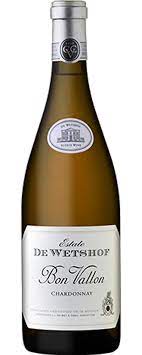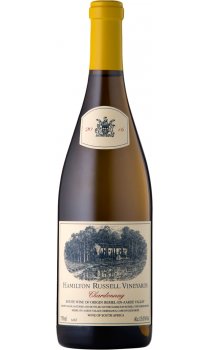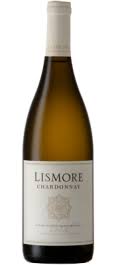Chardonnay reflection
“This Covid is a wicked thing,” said De Wetshof’s Danie de Wet. “It keeps us all apart.”
De Wet is frustrated that restrictions on travel and gatherings prevented them from hosting De Wetshof’s biennial Celebration of Chardonnay, an event held every two years since 2004. “We need to get together, the old folks and the young winemakers – to talk, to taste and to share ideas.”
South Africa’s wine fraternity owes men like Danie de Wet a debt of gratitude. Together with his compatriots, Jan Boland Coetzee, and the sadly departed Frans Malan, Niel Joubert and Tim Hamilton Russell, all of whom played an enormous role in establishing the country’s global reputation for producing fantastic chardonnay.
Current hotshots like Craig Wessels of Restless River, Peter-Allan Finlayson of Crystallum, Emul Ross of Hamilton Russell, Sjaak Nelson of Jordan, Samantha O’Keefe of Lismore and Adam Mason of De Morgenzon and many others – knowingly or unknowingly – walk on the paving stones or foundations laid by these men. Were it not for their defiance in smuggling in new plant material more than 40 years ago South Africa would not have the international recognition it does today.
“My time is running out and I’m coming to the end of the road,” said Danie de Wet. “I’m not a researcher. I didn’t discover anything – but I have learnt a lot over the years. Why should I take that knowledge to my grave?” he reflected. “We must be generous and share whatever information we have.”
And the De Wet family have been unfailingly generous in hosting – on their own dime – the Celebration of Chardonnay. Guest speakers over the years have included the late Steven Spurrier who began his address by quoting Master Sommelier Ronan Sayburn: “Flavourwise, chardonnay is the chicken of the wine world – a blank canvas that winemakers are free to write upon.”
Or the ever thoughtful and eloquent Andrew Jefford who later reviewed a number of local chardonnay in Decanter following his 2014 visit after an absence of a decade. “South Africa has potentially distinguished sites in locations whose climatic personalities we barely have the means of gauging or expressing just yet, but which are certainly more various than raw latitude would suggest. Chardonnay, often now vinified without acid adjustment, sings in many of these places, producing balanced and drinkable wines which have completed their phenolic journey in evident serenity.”
In his Decanter review he praised Vergelegen’s 2013 reserve: “A soft, subtle, understated yet close-textured palate: all sighs and whispers. It’s hard to stop sipping this.” Of Jordan’s stellar Nine Yards chardonnay he wrote: “Few South African Chardonnays have more confidence and strut to them than Jordan’s much-awarded Nine Yards: a cloud of oatflake and hazel scents, then a plump, seamless, unctuous palate with a huge amount to give and to enjoy – and no cellar hibernation required.” And Anthonij Rupert Serruria chardonnay from Elandskloof was likened to a cross between white Hermitage and Chassagne-Montrachet in its graceful articulation, being “full of wildflower lift”.
Those wines would not have been possible without the work of the chardonnay pioneers, Danie de Wet just one of them. With the benefit of 40 years’ hindsight, De Wet says he is truly excited and thrilled by wines from this new crop of winemakers.
His knowledge is encyclopaedic. He cites the proverbial chapter and verse about oak, rootstocks, clones and massal selections, viticulture, trellising systems, soil, fermentation and yeasts. “South Africa is a late comer with regard to site specificity,” he said, echoing what Jefford stated. “But it’s starting to happen.” Talking chardonnay with Danie de Wet is a masterclass: condensed, focussed, precise and yet nuanced.
However, everything comes back to the market and the ability to sell the wine. It’s something Neleen Strauss of High Timber restaurant in the City of London knows all too well. Attitudes towards South African chardonnay at the Jordan’s restaurant on the banks of the Thames she says are unfailingly positive. “I’ve never really had issues with selling SA chard. My confidence in it must have worked like a Bluetooth device or something,” she quipped.
Customers request the old faithfuls by name, she said, name checking Hamilton Russell, for one. “And then in a case like Lismore which has a stunning pinot, they assume (and rightly so!) that the chardonnay will also be excellent.” Bottom line, Strauss said chardonnay outsells other South African whites like chenin blanc, sauvignon blanc or white blends by the proverbial country mile.
De Wet tells the story of how, years ago, author Pamela vandyk Price confidently proclaimed that South Africa was not chardonnay country. “But criticism can be good – because it makes you sit back and think. You need to process the message and think about how to make your wines better.” Anyone afforded the opportunity to sit and listen to the lessons Danie de Wet has already learned, would do well to take along pen and paper or a recording device. His thoughts on diversity of clonal material and the importance of rootstocks are the stuff of wine geeks dreams!
“When I was a young man, I was well received by the older men of the industry. Oom Sydney Back, Oom Frans Malan – and I called them all Oom because I had respect for what they had done and achieved – and Günter Brözel. I learned from them, so it’s only fitting that I give back.”
His parting shot was: “Everything’s easy when you know how…”



- Blog by Fiona McDonald